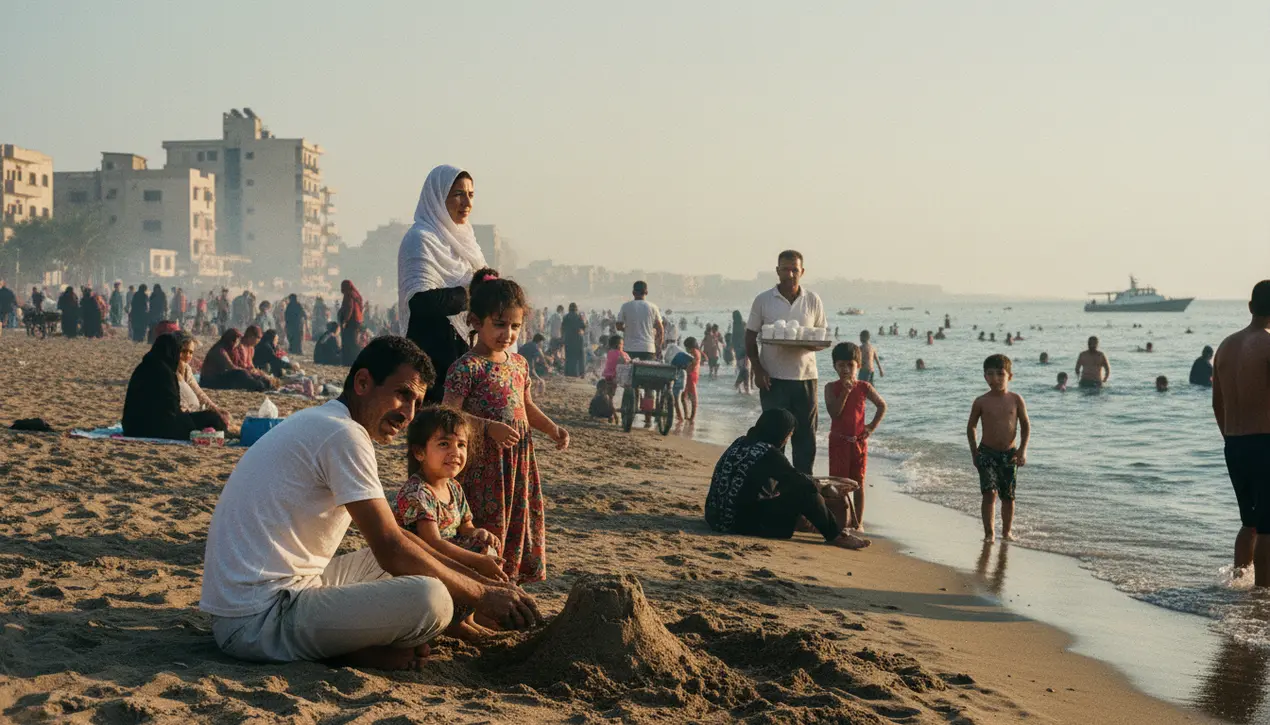
Politicsconflict & defenseWar Reports and Casualties
The Great Syrian Beach Trip: A Return to Normalcy
EM
Emma Wilson
3 hours ago7 min read2 comments
The Syrian coastline, for years a place where the sound of waves was drowned out by the ever-present fear of state surveillance and violence, is now witnessing a fragile, profound transformation. Where a simple family outing to the beach was once an act of immense courage—a venture that could lead to arbitrary arrest, interrogation, and torture by the regime's sprawling security apparatus—the sands are now dotted with families, the air filled with the laughter of children and the scent of salt and grilling fish.This is not merely a change in scenery; it is a seismic shift in the daily reality for millions. After more than a decade of a brutal civil war that fractured the nation, claiming over half a million lives and displacing nearly half of its pre-war population, these tentative steps toward normalcy are as significant as any ceasefire.The ability to soak up the sun without looking over one's shoulder is a luxury that was unimaginable just a few years ago. This return is largely confined to government-held territories, areas where the regime of Bashar al-Assad, backed by Russian airpower and Iranian militias, has reconsolidated control through a campaign of siege and bombardment that human rights organizations have repeatedly labeled as war crimes.The relative calm in these coastal regions, including the city of Latakia, a regime stronghold, is a direct product of that military victory, a peace enforced by a victor. Yet, this normalcy is deeply uneven and precarious.It is a normalcy for some, built upon the ashes of countless others. For the families on the beach, the trauma of the conflict is a fresh wound.Every parent there has likely lost a loved one, witnessed unspeakable horrors, or endured years of deprivation. The psychological toll is immense, and the simple act of building a sandcastle with one's child is a powerful, if unspoken, act of defiance against the memories of loss.Economically, the situation remains dire. Hyperinflation has ravaged the Syrian pound, and most of the population lives in poverty.A trip to the beach is a significant expense, a rare indulgence in a life defined by struggle. The sight of commerce returning to the coastal promenades—vendors selling ice cream, cafes reopening their shuttered doors—is a hopeful sign, but it is a nascent economy propped up by a privileged few and the regime's allied elites.Meanwhile, vast swathes of the country, particularly the north, remain outside government control, embroiled in a different kind of instability involving Turkish-backed factions and Kurdish-led forces. For the millions of Syrians who are refugees in neighboring countries or internally displaced, the idea of a carefree beach trip remains a distant dream, a symbol of a homeland they cannot safely return to.The international community remains largely divided on reconstruction, with stringent sanctions in place that, while aimed at the regime, inevitably compound the suffering of ordinary citizens. Analysts warn that this fragile calm is not a sustainable peace, but a frozen conflict.The underlying grievances that sparked the 2011 uprising—authoritarianism, corruption, lack of freedom—remain entirely unaddressed. The security apparatus, though less visibly omnipresent on the beach, is still intact.The risk of a return to violence or a descent into a failed state scenario is ever-present. Therefore, the scenes of Syrians reclaiming their coastline are not a happy ending, but a poignant, heartbreaking chapter in an ongoing story. It is a testament to the human spirit's relentless pursuit of life, a temporary respite in a long winter, and a stark reminder of the profound cost of the peace that has been achieved.
#Syria
#conflict
#beach
#security
#civilian life
#recovery
#featured
Stay Informed. Act Smarter.
Get weekly highlights, major headlines, and expert insights — then put your knowledge to work in our live prediction markets.
Comments
Loading comments...
© 2025 Outpoll Service LTD. All rights reserved.